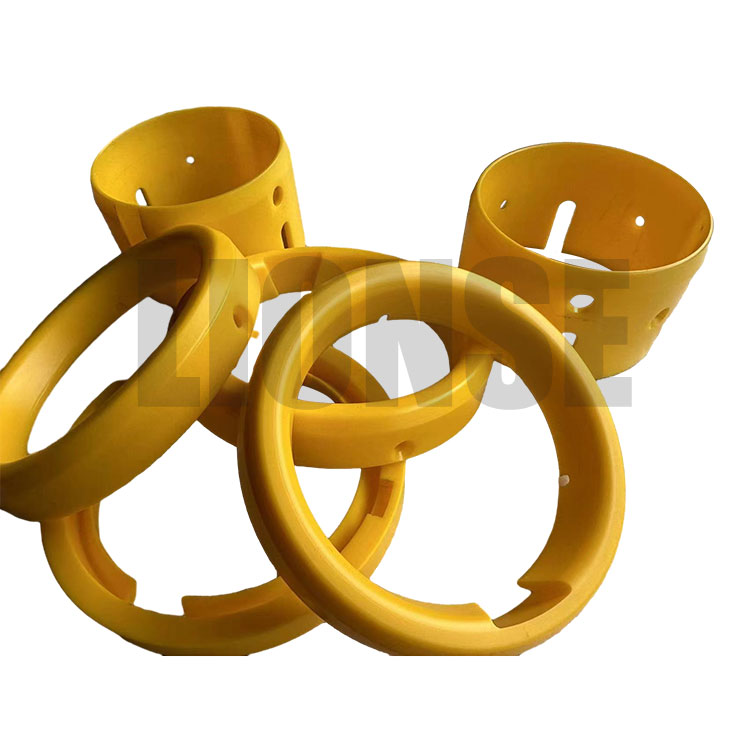Types of Precision Grinding Processes
2024-06-13
Precision grinding parts refer to components that undergo grinding processes to achieve high levels of precision and surface finish. Grinding is a machining process where an abrasive wheel or belt removes material from a workpiece's surface to create the desired shape, dimensions, and surface texture. Here’s an overview of precision grinding parts, including the types of grinding processes, materials involved, applications, and considerations:
Types of Precision Grinding Processes
1. Surface Grinding:
- Process: Uses a horizontal grinding wheel to remove material from the surface of a workpiece.
- Applications: Achieves flat surfaces, tight tolerances, and smooth finishes on metals, plastics, and ceramics.
2. Cylindrical Grinding:
- Process: Rotates the workpiece on a spindle while a grinding wheel cuts cylindrical shapes with high precision.
- Applications: Produces shafts, rods, and other cylindrical components with precise dimensions and surface finishes.
3. Centerless Grinding:
- Process: Uses a regulating wheel to control the workpiece and a grinding wheel to remove material without using centers for support.
- Applications: Suitable for high-volume production of cylindrical parts like pins, rollers, and shafts.
4. Internal Grinding:
- Process: Grinds the inner diameter of a workpiece using a small grinding wheel or abrasive mandrel.
- Applications: Creates precise bores, holes, and internal features in components like bearings and hydraulic cylinders.
5. Thread Grinding:
- Process: Specialized grinding process to create precise threads on screws, bolts, and other threaded components.
- Applications: Used in automotive, aerospace, and machinery industries for producing accurate threads with tight tolerances.
Materials Commonly Ground
1. Metals:
- Steel: Carbon steel, stainless steel, tool steel.
- Aluminum: Lightweight and corrosion-resistant.
- Titanium: High strength-to-weight ratio, used in aerospace and medical industries.
- Alloys: Nickel alloys, brass, bronze.
2. Ceramics:
- Alumina: High hardness and wear resistance, used in electronic components and cutting tools.
- Zirconia: Tough and durable, used in medical implants and industrial applications.
3. Plastics:
- Nylon: Low friction and good wear resistance.
- Acrylic: Optical clarity and chemical resistance.
- Polyethylene: High impact strength and flexibility.
Applications of Precision Grinding Parts
1. Automotive Industry:
- Engine Components: Valves, pistons, crankshafts, and camshafts requiring precise dimensions and surface finishes.
- Transmission Parts: Gears, shafts, and bearing surfaces.
2. Aerospace Industry:
- Turbine Components: Blades, vanes, and housings in jet engines requiring high-temperature resistance and dimensional accuracy.
- Structural Parts: Aircraft landing gear, hydraulic components.
3. Medical Industry:
- Implants: Orthopedic implants like knee and hip replacements requiring biocompatibility and precise surface finishes.
- Surgical Tools: Instruments like drills, saws, and cutting tools used in surgeries.
4. Tool and Die Making:
- Molds: Injection molds and die casting molds for manufacturing plastic and metal components.
- Dies: Stamping dies for producing complex shapes in sheet metal.
5. Precision Machinery:
- Bearings: Rolling elements and races requiring precise dimensions and surface quality for smooth operation.
- Pump Components: Shafts, impellers, and housings for efficient fluid handling.
Benefits of Precision Grinding Parts
1. Accuracy: Achieves tight dimensional tolerances and surface finishes down to microns, ensuring parts fit and function perfectly.
2. Versatility: Suitable for a wide range of materials and part geometries, from simple to complex shapes.
3. Surface Quality: Produces smooth surfaces that reduce friction, wear, and corrosion, extending component lifespan.
4. Cost-Effectiveness: Enhances production efficiency with high material removal rates and minimal rework or scrap.
Considerations for Precision Grinding
1. Material Selection: Choose the appropriate material based on mechanical properties, heat resistance, and surface finish requirements.
2. Coolant and Lubrication: Use coolant or lubricant to control heat generation, prevent thermal damage, and improve surface finish.
3. Machine Capability: Select grinding machines with the capacity and precision necessary for the specific part requirements.
4. Quality Control: Implement rigorous inspection and measurement techniques to ensure parts meet specifications and standards.
Summary
Precision grinding plays a critical role in manufacturing by producing parts with high accuracy, tight tolerances, and superior surface finishes across various industries. Whether producing automotive components, aerospace parts, medical implants, or intricate machinery parts, precision grinding ensures optimal performance and reliability. By leveraging advanced grinding technologies and materials expertise, manufacturers can achieve consistent quality, efficiency, and cost-effectiveness in producing precision ground parts.



